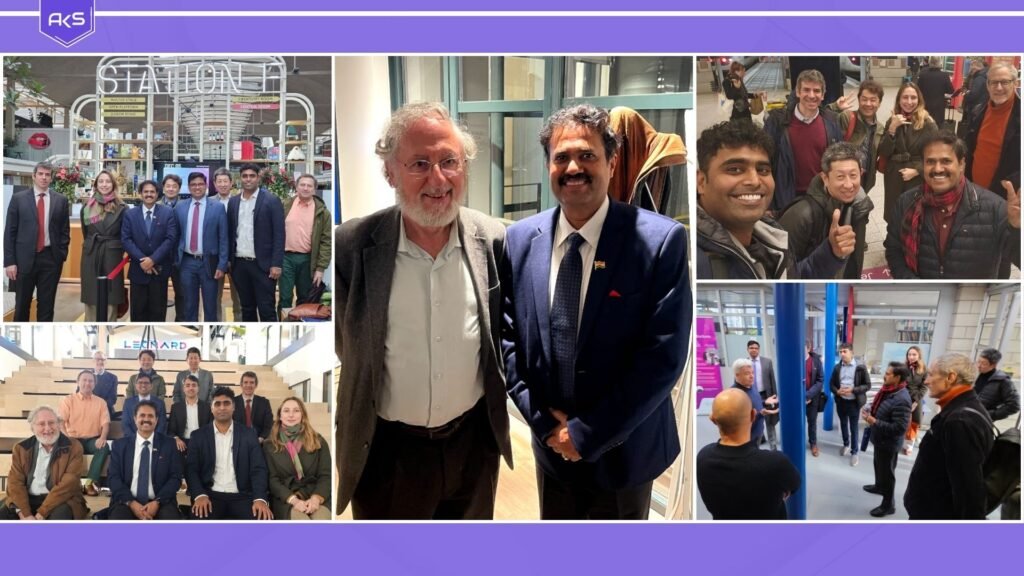Exploring Electric Road Systems (ERS): A Pathway to Sustainable Mobility

The global shift toward greener and more efficient transportation systems has given rise to Electric Road Systems (ERS), often referred to as Charge As You Drive (CAYD) or Electric Highways. These cutting-edge systems enable vehicles to charge dynamically while in motion, offering a transformative solution to challenges faced by heavy-duty trucks and commercial fleets. With active pilot projects in countries like France, Sweden, and Belgium, ERS is poised to revolutionize transportation infrastructure, significantly reducing carbon emissions and the reliance on static charging stations.
As a Road Safety Ambassador and an advocate for sustainable transportation, Akhilesh Srivastava has been at the forefront of exploring such innovations. His recent visits to Europe provided an opportunity to witness ERS technologies firsthand, showcasing their potential to transform global mobility solutions.
Key ERS Technologies Revolutionizing Transportation
The ERS framework leverages three primary technologies to deliver on-the-go charging:
- Inductive Charging: Wireless energy transfer through coils embedded beneath the road surface.
- Conductive Charging: Contact-based charging via rails installed along the road.
- Overhead Catenary Systems: Power supplied through overhead lines connected to pantographs on trucks and buses.
Each technology presents unique advantages, offering diverse solutions for various use cases, from long-haul trucking to public transportation.
Global Pilots Showcasing ERS Success
🇫🇷 France:
The A10 Highway is home to innovative ERS pilot projects, developed by University of Gustave, Vinci, Elanroad, and AISIN systems. Additionally, eRoadMontBlanc focuses on deploying ERS in high-traffic, environmentally sensitive areas, paving the way for a sustainable future.
🇧🇪 Belgium:
Belgium is advancing conductive charging pilots in Brussels, demonstrating a practical approach to dynamic EV charging within urban settings.
🇸🇪 Sweden:
Sweden’s eRoadArlanda and Gotland Pilot are setting global benchmarks with their dynamic charging technologies. These projects have shown significant reductions in carbon emissions, offering cost-effective solutions for electrifying heavy vehicles.
Why ERS is Crucial for the Future
According to McKinsey Insights, ERS could electrify 50%-70% of global highways by 2050, delivering significant benefits:
- Environmental Impact: Cut CO₂ emissions by up to 80% per vehicle.
- Cost Reduction: Reduce battery costs by 30%-40% for heavy-duty trucks.
- Enhanced Productivity: Save 4-6 hours per trip for long-haul trucks, boosting fleet efficiency.
- Cargo Optimization: Eliminate the need for massive battery packs, increasing cargo capacity and lowering vehicle manufacturing costs by 40%.
ERS is a game-changer, making electric mobility more accessible, practical, and sustainable for commercial and personal use.
India’s Opportunity with ERS
India is uniquely positioned to benefit from ERS due to its extensive network of highways and one of the world’s largest fleets of commercial vehicles. Integrating ERS into India’s major freight corridors could bring transformative changes:
- Reduced Diesel Imports: Transitioning 30% of long-haul trucksto electric highways could save billions annually.
- Carbon Emission Reductions: ERS aligns perfectly with India’s Net Zero ambitions, drastically cutting greenhouse gas emissions.
- Lower Freight Costs: By reducing fuel dependency and freight costs, ERS could enhance the global competitiveness of Make in India
- Efficient EV Adoption: Dynamic charging decreases reliance on static charging stations, streamlining India’s transition to a robust EV ecosystem.
Akhilesh Srivastava: Championing Road Safety and Sustainable Mobility
Akhilesh Srivastava, a visionary leader in road safety and Intelligent Transportation Systems (ITS), continues to advocate for integrating innovative technologies into India’s infrastructure. By fostering international collaborations and learning from global success stories, he envisions a future where India leads in sustainable mobility solutions.
His visit to Europe underscores his commitment to adopting cutting-edge solutions like ERS. These efforts not only reinforce India’s strides toward greener transportation but also elevate its standing in the global mobility ecosystem.
Conclusion
Electric Road Systems (ERS) represent a significant step toward achieving sustainable, efficient, and cost-effective transportation globally. With leaders like Akhilesh Srivastava championing this cause, India is well-positioned to embrace such transformative technologies. By investing in ERS, the nation can pave the way for a cleaner, smarter, and more sustainable future.
Stay tuned for more updates as Akhilesh Srivastava continues to lead the charge in integrating global innovations into India’s transportation landscape.



